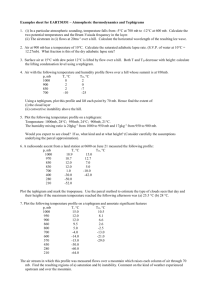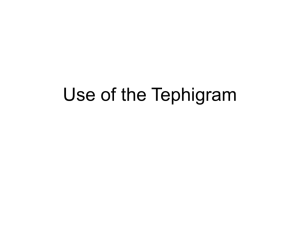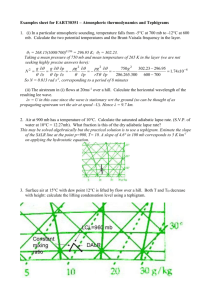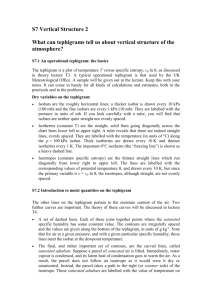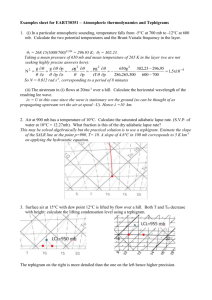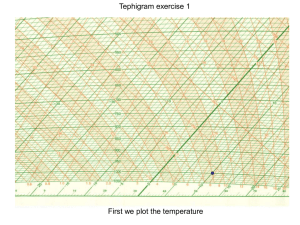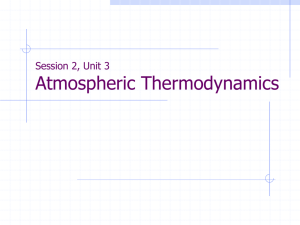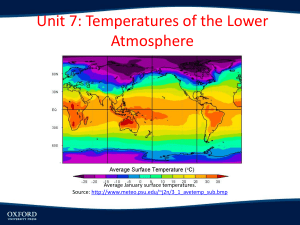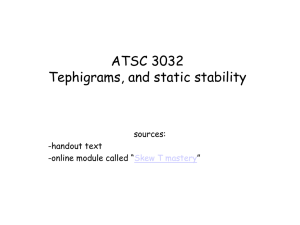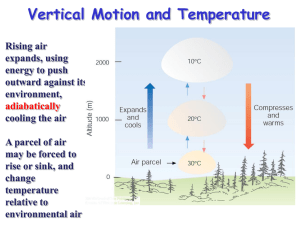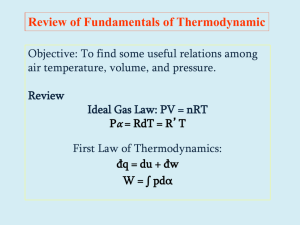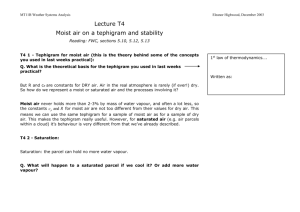EART30351_lec_4
advertisement
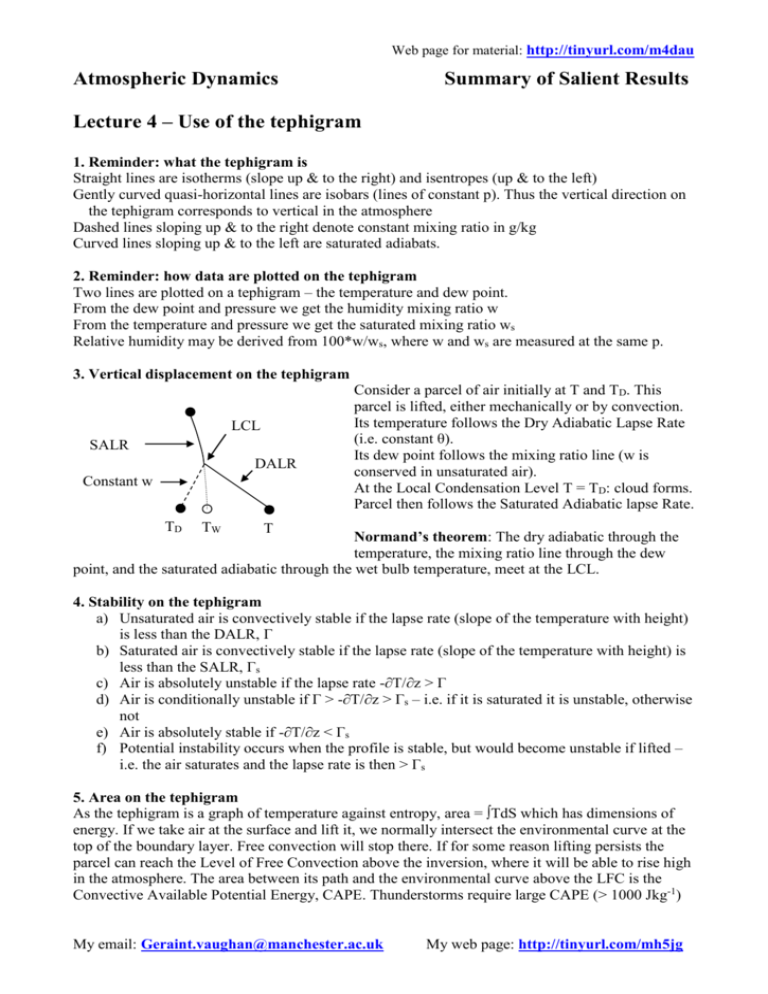
Web page for material: http://tinyurl.com/m4dau Atmospheric Dynamics Summary of Salient Results Lecture 4 – Use of the tephigram 1. Reminder: what the tephigram is Straight lines are isotherms (slope up & to the right) and isentropes (up & to the left) Gently curved quasi-horizontal lines are isobars (lines of constant p). Thus the vertical direction on the tephigram corresponds to vertical in the atmosphere Dashed lines sloping up & to the right denote constant mixing ratio in g/kg Curved lines sloping up & to the left are saturated adiabats. 2. Reminder: how data are plotted on the tephigram Two lines are plotted on a tephigram – the temperature and dew point. From the dew point and pressure we get the humidity mixing ratio w From the temperature and pressure we get the saturated mixing ratio ws Relative humidity may be derived from 100*w/ws, where w and ws are measured at the same p. 3. Vertical displacement on the tephigram LCL SALR DALR Constant w TD TW Consider a parcel of air initially at T and TD. This parcel is lifted, either mechanically or by convection. Its temperature follows the Dry Adiabatic Lapse Rate (i.e. constant θ). Its dew point follows the mixing ratio line (w is conserved in unsaturated air). At the Local Condensation Level T = TD: cloud forms. Parcel then follows the Saturated Adiabatic lapse Rate. T Normand’s theorem: The dry adiabatic through the temperature, the mixing ratio line through the dew point, and the saturated adiabatic through the wet bulb temperature, meet at the LCL. 4. Stability on the tephigram a) Unsaturated air is convectively stable if the lapse rate (slope of the temperature with height) is less than the DALR, Γ b) Saturated air is convectively stable if the lapse rate (slope of the temperature with height) is less than the SALR, Γs c) Air is absolutely unstable if the lapse rate -∂T/∂z > Γ d) Air is conditionally unstable if Γ > -∂T/∂z > Γs – i.e. if it is saturated it is unstable, otherwise not e) Air is absolutely stable if -∂T/∂z < Γs f) Potential instability occurs when the profile is stable, but would become unstable if lifted – i.e. the air saturates and the lapse rate is then > Γs 5. Area on the tephigram As the tephigram is a graph of temperature against entropy, area = ∫TdS which has dimensions of energy. If we take air at the surface and lift it, we normally intersect the environmental curve at the top of the boundary layer. Free convection will stop there. If for some reason lifting persists the parcel can reach the Level of Free Convection above the inversion, where it will be able to rise high in the atmosphere. The area between its path and the environmental curve above the LFC is the Convective Available Potential Energy, CAPE. Thunderstorms require large CAPE (> 1000 Jkg-1) My email: Geraint.vaughan@manchester.ac.uk My web page: http://tinyurl.com/mh5jg
